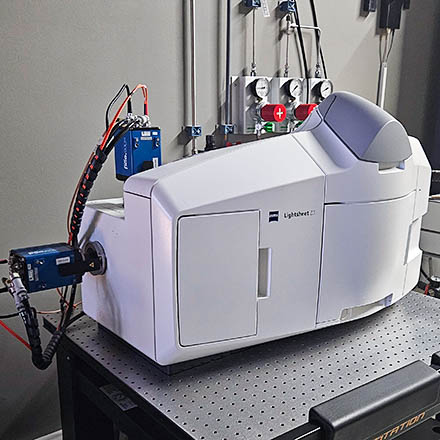
Location: [Oeiras] Room 0B03
Manufacturer: ZEISS Microscopy
Model: Lightsheet Z.1 (click for Zeiss webinar)
Nickname: "Lightsheet"
Software: ZEN 3.1 LS (HF 16)
Year: 2020
SN: 2583000325
Data will be deleted after: 1 month
→  ZEISS Lightsheet Z.1 Usage Statistics
ZEISS Lightsheet Z.1 Usage Statistics
